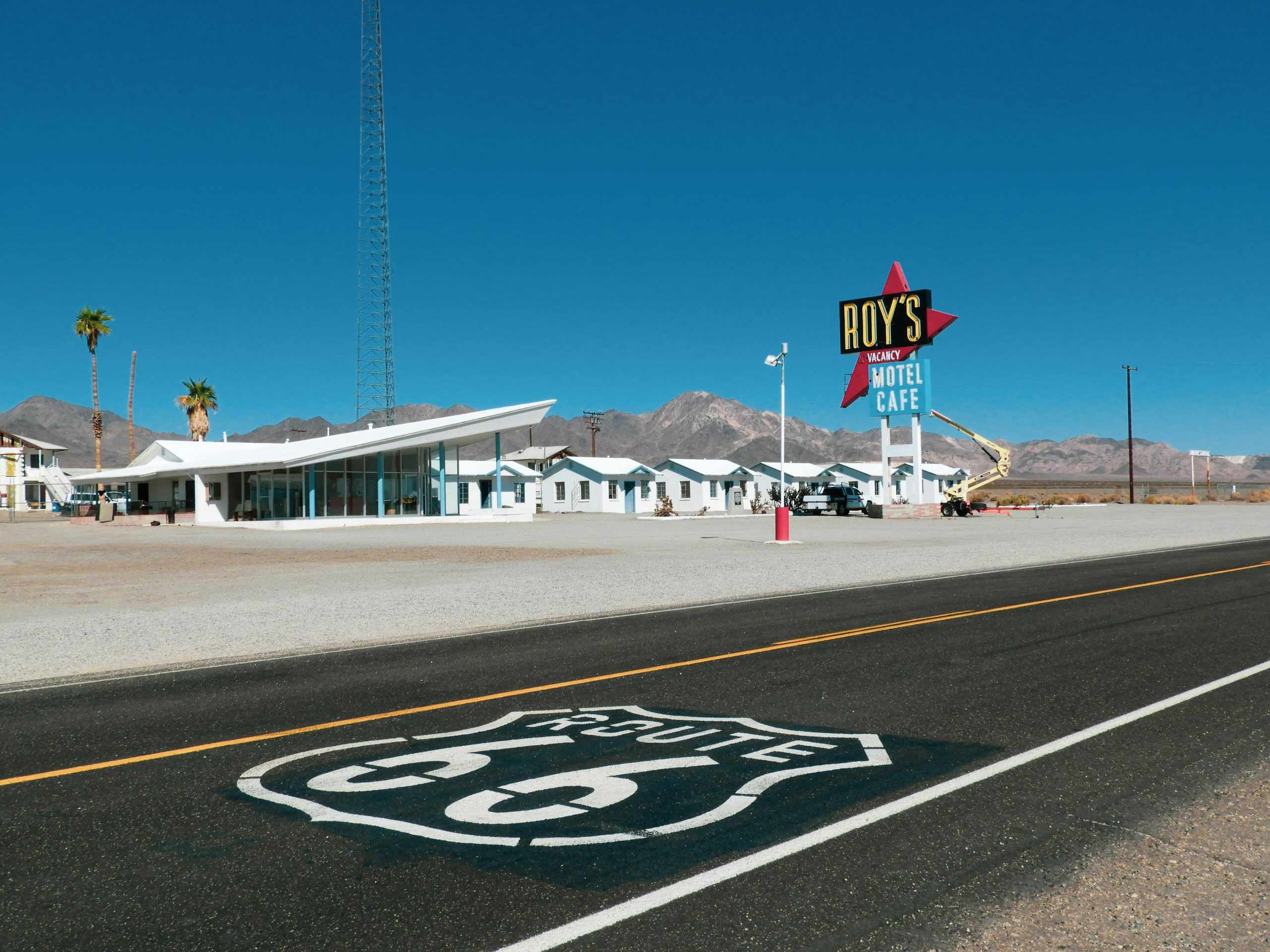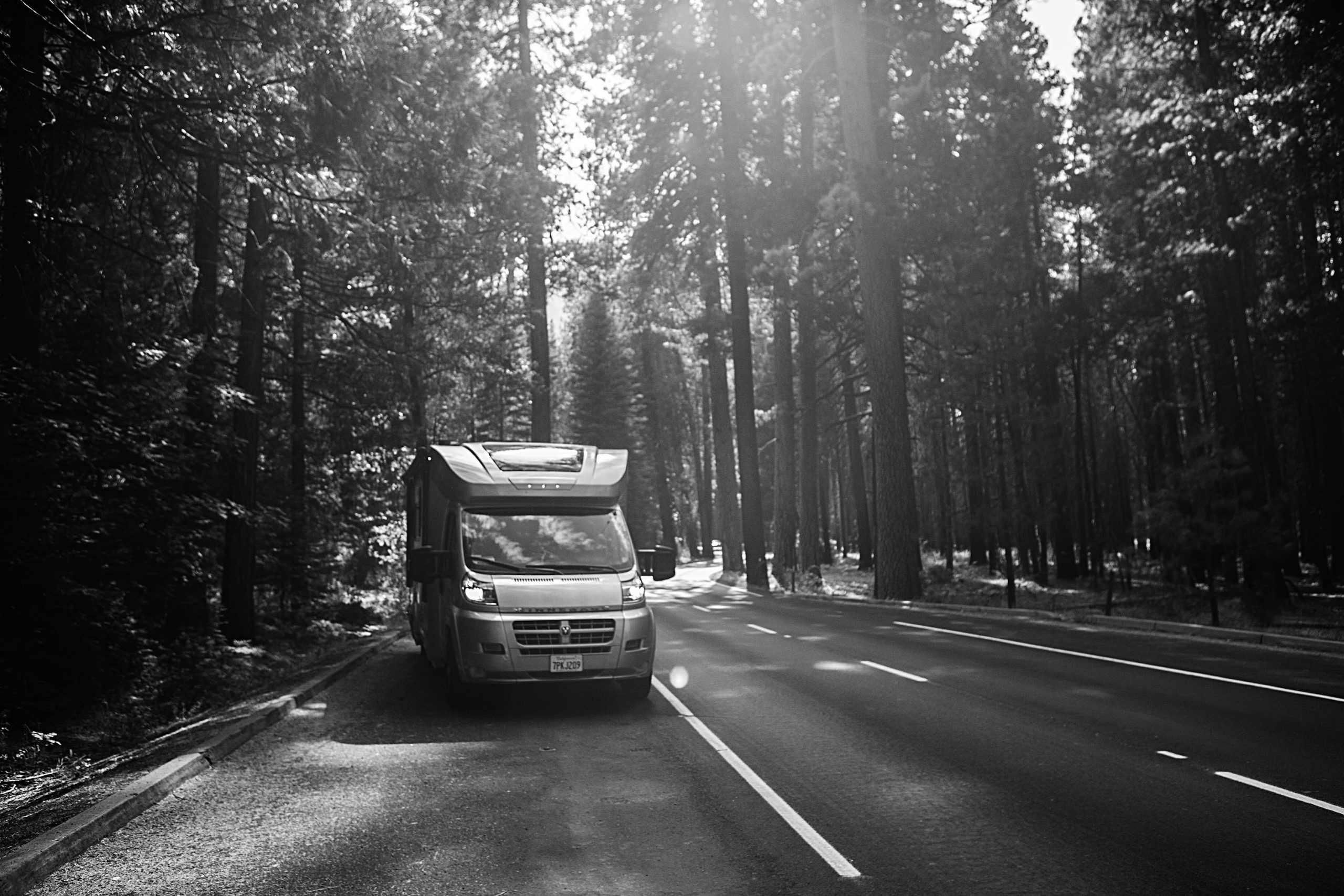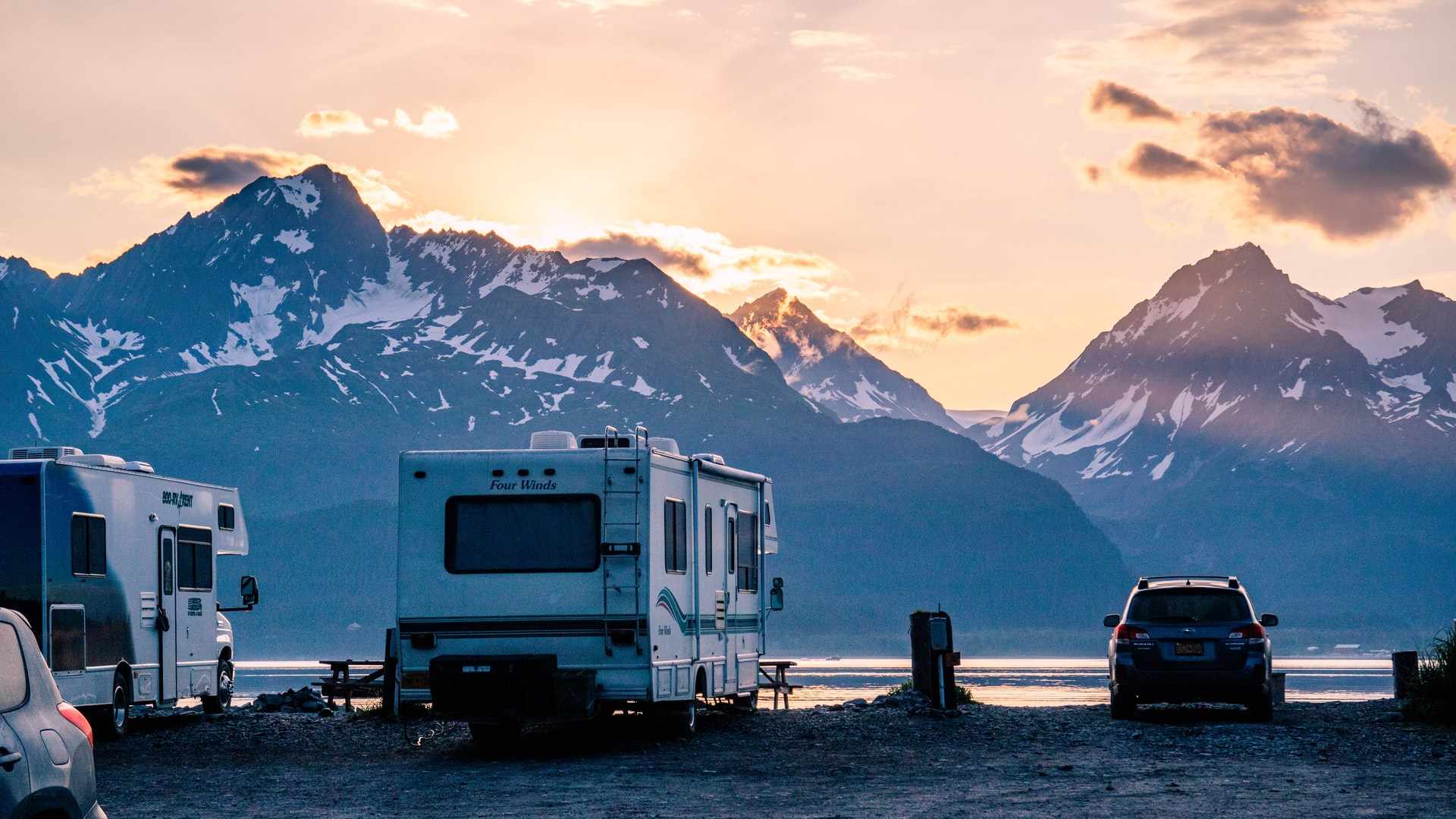When we talk to people about what keeps them from renting an RV for the first time, the same thing come up again and again: “I know how to drive a car, but an RV is huge!” Jimmy Fallon even joked on the Tonight Show that he thought it must be like driving a car attached to 30 Rockefeller Plaza. That’s some intimidated driving.
We wanted to ease your mind and let you know how you can approach the first time you drive a building (it’s really not that bad). Here are four great beginner tips for how to drive an RV:
1. Take a Practice Drive
Step into your RV, and familiarize yourself with interior by driving it around a parking lot. Turning, backing up, braking, and parking are all very different in an RV than in a car.
The main thing to remember is that your RV is bigger and heavier. Go farther out into the intersection before starting a turn to compensate for the increased turning radius. When braking, know that heavier vehicles take longer to stop, so put more space between you and the vehicle in front of you while driving.
There’s no real advice for backing up and parking. Inexperienced drivers will want someone to stand outside the RV directing them into their spot until they’re comfortable with the action.
Practice turning, backing up, braking, and parking in an empty lot again and again before attempting to navigate a busy road. Take your time and get comfortable before you tackle a bigger space.
2. Know the Height of Your Rig
Height is not much of a concern when driving a normal car. With an RV, however, it’s imperative you know the height of your rig.
Most RVs (including Class A) are between 10 and 14 feet in height. We recommend writing down the exact height of your RV and taping it to the dash for easy reference.
The height of most interstate overpasses is 16 feet so you’ll have plenty of clearance in a standard RV. Fast food drive-thrus and bank drive-thrus, on the other hand, often have clearances of only 10 feet. You’ll want to get out of your RV and go inside at these establishments.
3. Plan Your Fuel Ups Wisely
The gas station is one of the most common and dangerous places to get into an accident in an RV.
Use a truck stop gas station over a standard gas station when possible. Identify these by their location next to the interstate, multitude of semis using them, and their more spacious fueling layouts. Love’s, TA Travel Centers, and Pilot Travel Centers are popular chain versions found across the United States.
We always recommend that new RV drivers have their driving partner stand outside the RV and guide them through the fueling process the first few times. Have them make sure you’re not too close to the pump, the roof, other vehicles, or any other objects.
4. Plan Your Trip to Ease Stress
Learning how to drive an RV is only one aspect of the perfect RV camping trip. Another thing we highly recommend doing is making reservations in advance.
RV parks, especially popular ones like Kampgrounds of America (KOA), fill up very quickly. KOAs are located across the country and provide family-friendly amenities like swimming pools, ice cream socials, and horseshoe pits. Many of them are located near popular tourist attractions.
Need a place to park your RV without a reservation? Dispersed camping in National Forests or on Bureau of Land Management land is free (up to 14 days) and usually easy to come by.
 Remember the tips above to make your next RV camping trip a success. All that it takes to learn to how to drive an RV is a little practice and preparation. Let Outdoorsy help you find the perfect RV rental for your upcoming vacation.
Remember the tips above to make your next RV camping trip a success. All that it takes to learn to how to drive an RV is a little practice and preparation. Let Outdoorsy help you find the perfect RV rental for your upcoming vacation.











